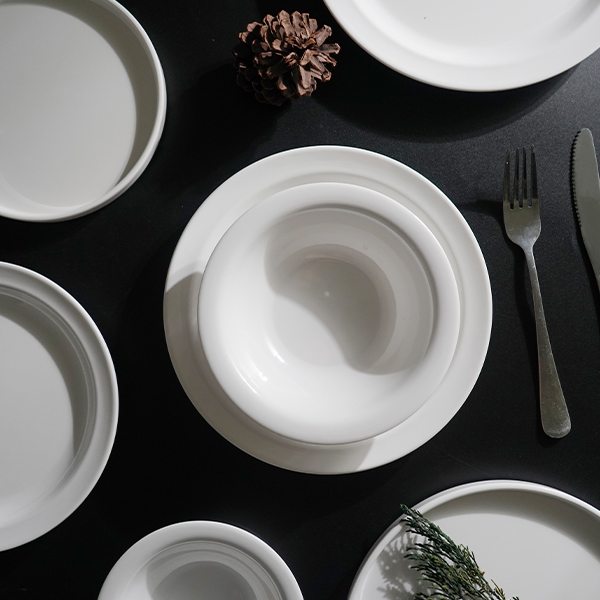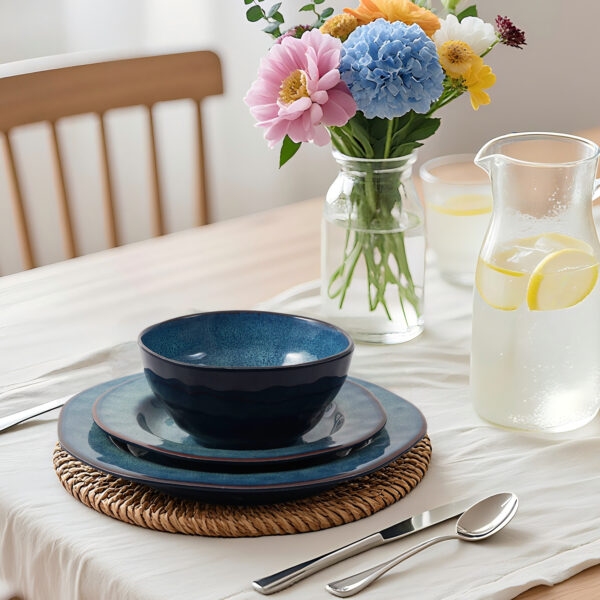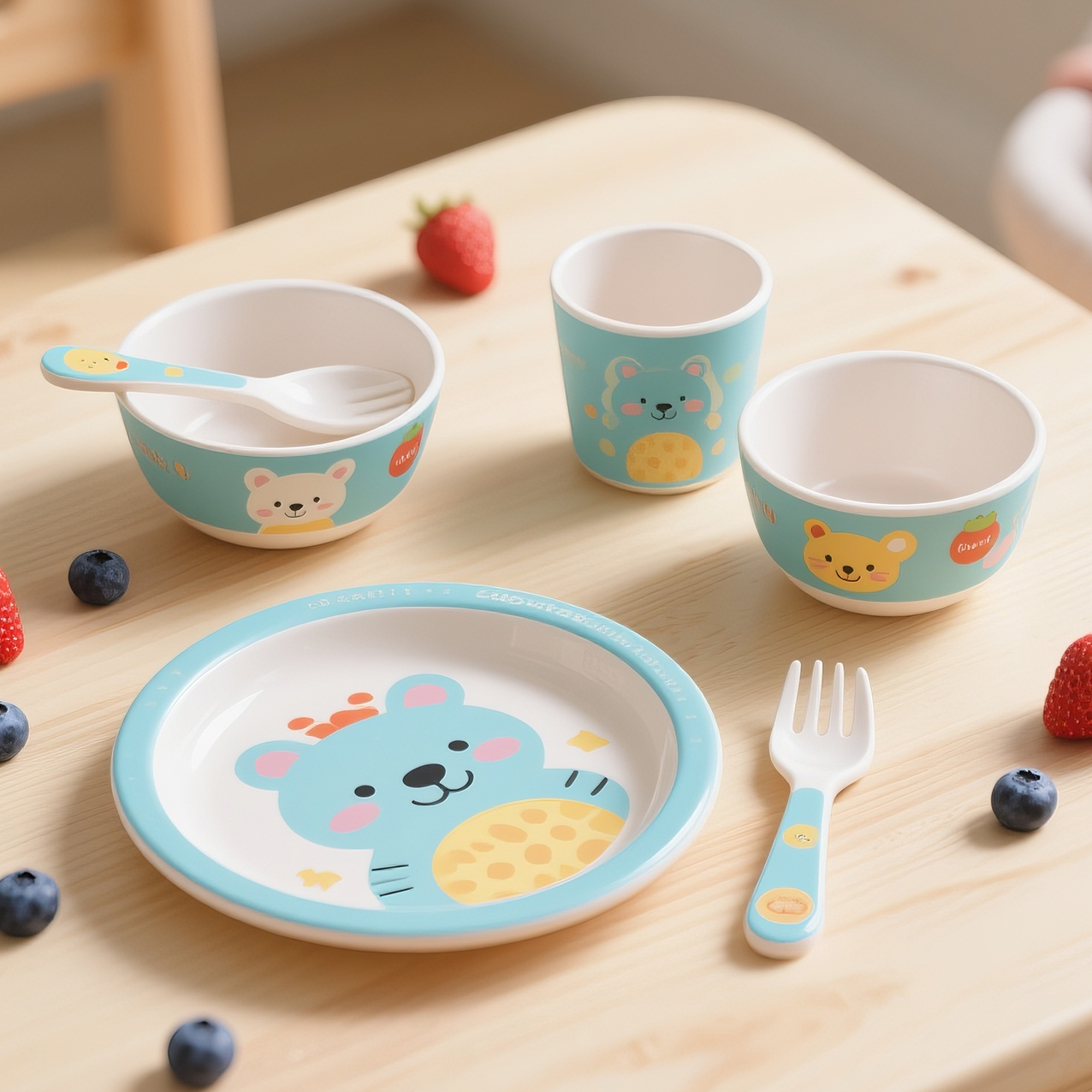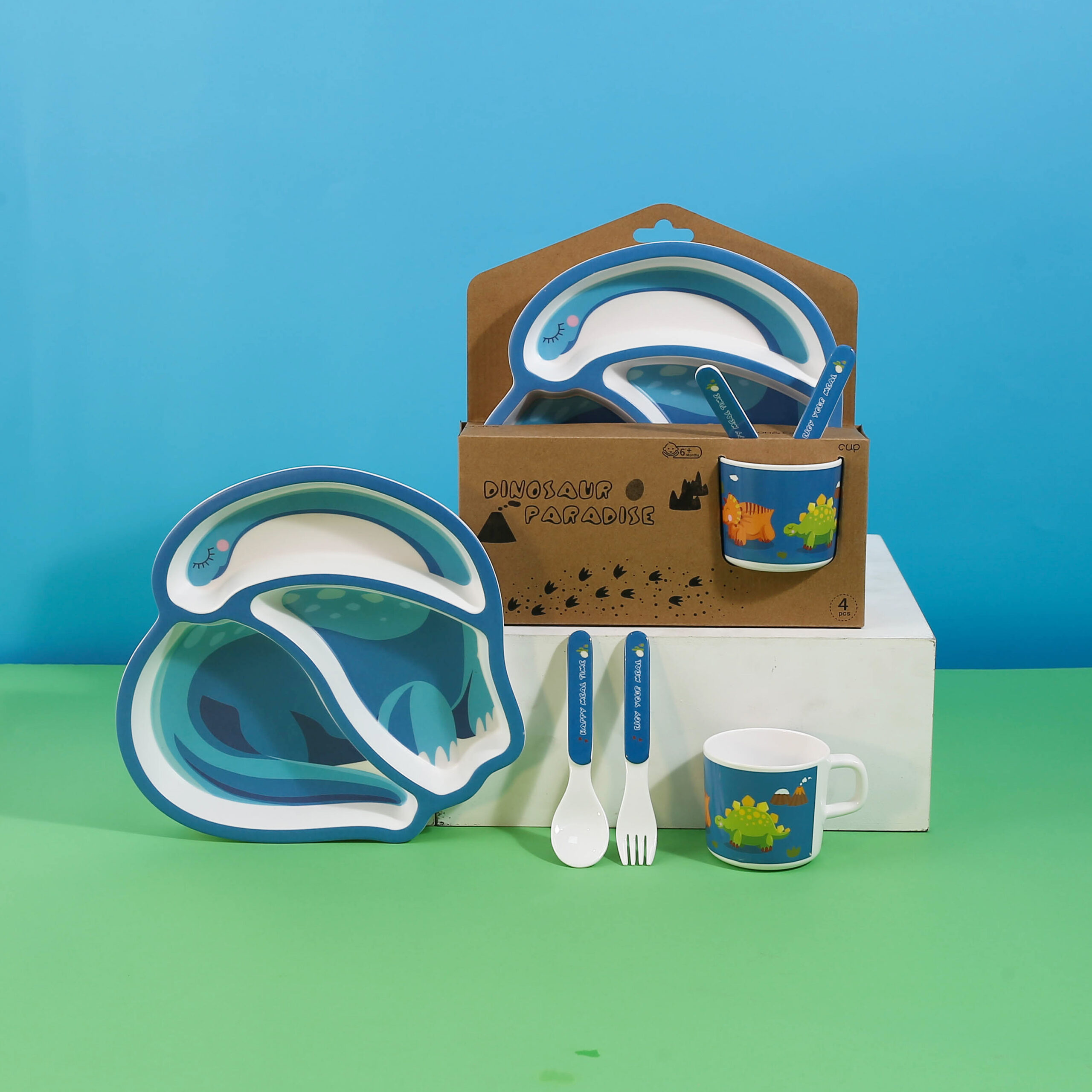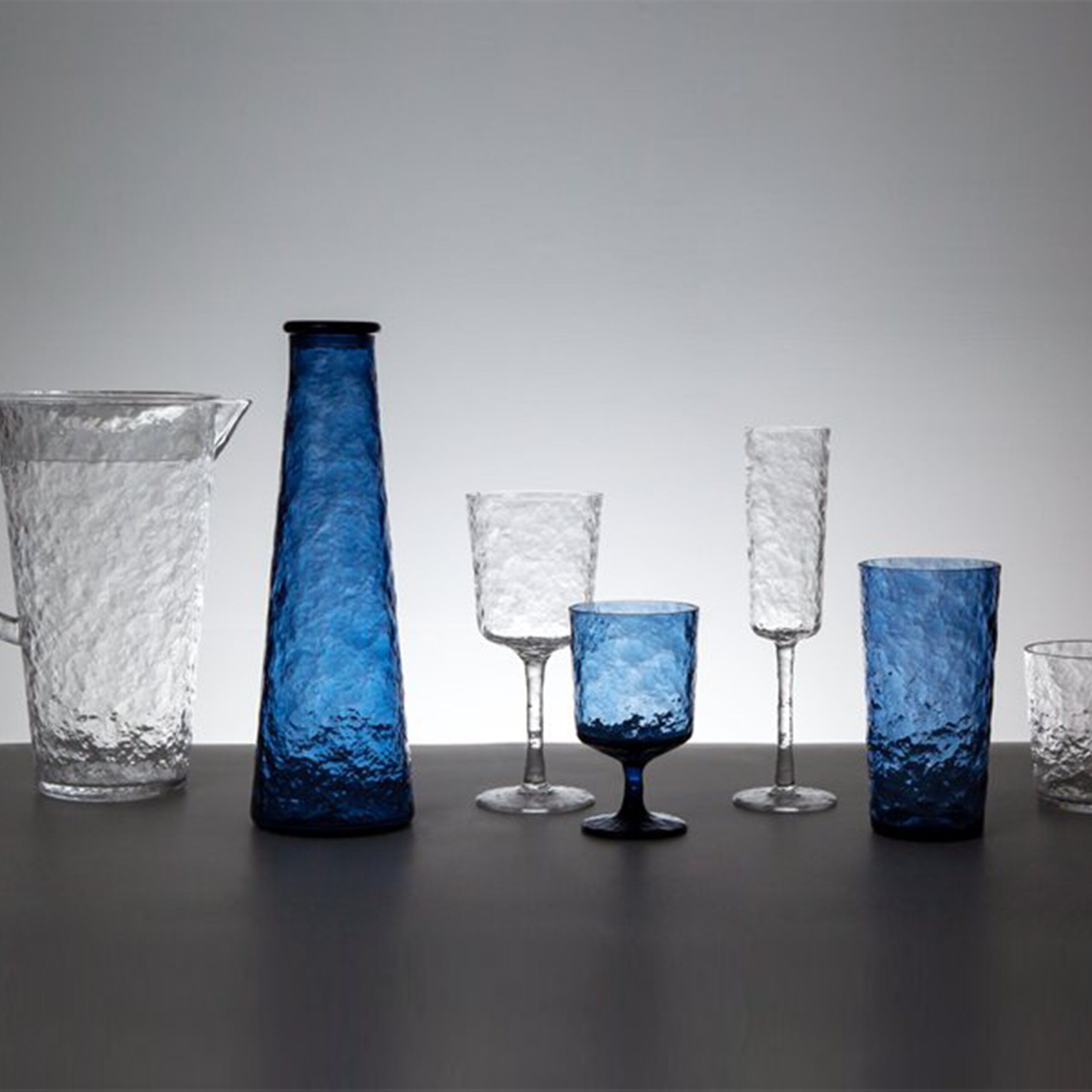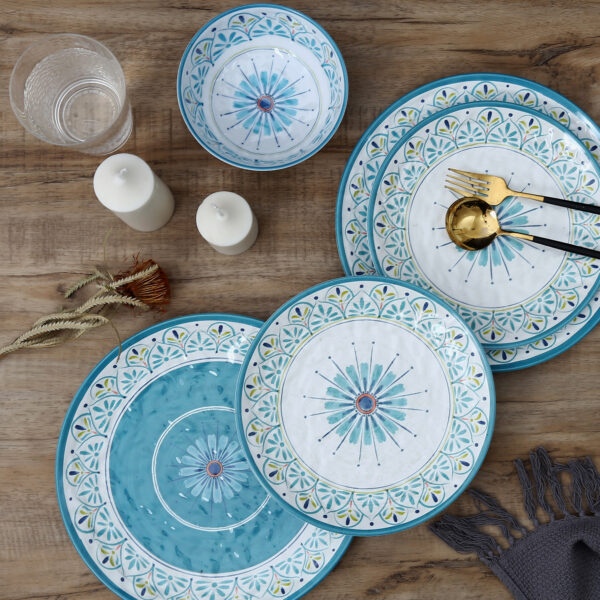Typical dinnerware includes materials made of melamine, plastic, ceramic, acrylic, and stainless steel. They are all favorite materials, functional, yet most importantly, knowledge of their food safety qualities is critical in everyday dinnerware use. The most common mistakes associated with food-safe surfaces and cleanup, certifications, and food contact safety nuances will be discussed.
According to the latest research, properly selecting and maintaining tableware can reduce the risk of food contamination by up to 50%. When choosing tableware, be sure to browse some daily tableware selection guides to help you make the right choice.
One of the most important aspects of food safety is the surface that comes into contact with food. Some typical tableware includes materials made of melamine, plastic, ceramic, acrylic, and stainless steel. They are all popular materials and fully functional, but most importantly, understanding their food safety standards is crucial for daily tableware use and knowing whether they meet food safety standards. We will discuss the most common mistakes related to food safety surfaces and cleaning, certification, and food contact safety details.
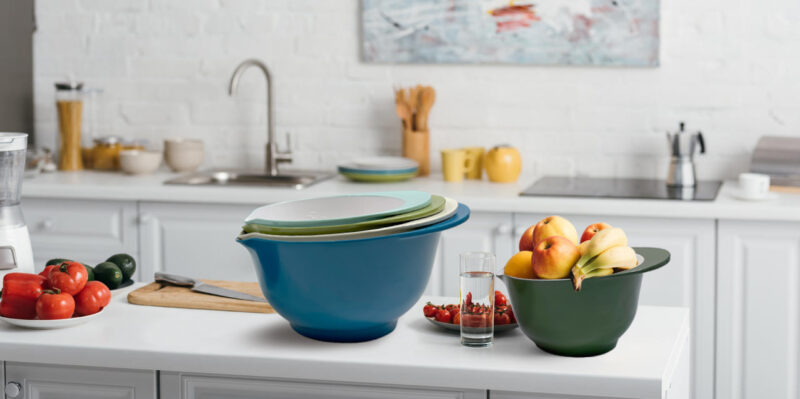
Materials Used in Common Dinnerware
The surface structure of common dinnerware is critical to food safety. For instance, surface smoothness, whether non-porous or porous, and intended use constitute a good part of the challenge.
| Tableware materials | Heat resistance | Safety | Applicable scenarios |
| Melamine | Moderate (not suitable for microwaves or ovens) | Relatively high (but wear, cracks, staining, etc., need attention) | Cafeterias, restaurants, household plates and bowls, suitable for repeated use with proper maintenance |
| Plastic (PP as an example) | High (temperature resistance up to 130°C, microwave-safe) | Relatively high (avoid high temperature deformation and aging) | Microwave containers, beverage cups, disposable takeout containers, etc., reusable depending on product design |
| Ceramic | Very high (able to withstand sudden temperature changes without deformation) | High (made from natural clay, free of harmful substances) | Tea cups, coffee cups, tableware, etc., in households and offices, especially suitable for hot beverages |
| Acrylic | Moderate to high (heat resistance varies by type, but generally heat-resistant) | Moderate (long-term exposure may cause skin irritation and respiratory difficulties) | Electrical appliances, construction, denture manufacturing, etc., ventilation and protection required |
| Stainless Steel | Very high (able to withstand high temperatures, suitable for hot water transportation) | High (smooth surface easy to clean, good hygienic safety) | Hot water transportation, food processing, cutlery (knives, forks, spoons), water supply systems, widely used in multiple fields |
Melamine and plastic:
Smooth, non-porous surfaces will hold food but may fail as surfaces for cooking.
- High-heat exposure
- microwaves and ovens
- may warp or degrade melamine.
The national standard stipulates the migration amount of melamine in melamine tableware that comes into contact with infant food, with a limit of 1mg/kg. If melamine tableware that exceeds the standard is used for a long time, it may have adverse effects on human health, such as causing urinary stones. Therefore, when choosing melamine tableware, be sure to check whether it has passed the quality inspection test.
Free monomers, degradation products, and additives in plastics may migrate to food and pose a threat to human health. For example, polycarbonate resin raw materials may produce phenol in the production of baby bottles. This substance is volatile and may cause harm to the human body. In addition, additives such as stabilizers and plasticizers in plastic packaging materials may also be carcinogenic or teratogenic. Therefore, when choosing plastic tableware, priority should be given to products with smooth surfaces, no scratches, no odor, and marked as food grade.
Ceramic:
Glazed ceramic, as commonly manufactured, should generally be a nonporous surface that will hold, serve, and cook food (if it is oven-safe). But improperly glazed and cracked ceramic may be porous, permitting liquids to seep into them and, thus, pose a contamination risk.
The surface enamel, firing temperature and pattern printing method of ceramic tableware will affect its safety. Underglaze color is smooth and shiny, and the pigment is covered by the glaze layer, so heavy metals are not easy to precipitate when used; while overglaze color has a convex feeling, and heavy metals are easy to precipitate when used, which poses a safety risk. Ceramic tableware fired at high temperatures has high density and stable properties, and harmful substances are difficult to dissolve. Therefore, when choosing ceramic tableware, you should give priority to products fired at high temperature, with underglaze color, and with a smooth and flawless surface.
Acrylic:
Acrylic flatware is lightweight and fairly durable, although not heat resistant. It should be selected for serving food at room temperature or cold dishes.
Although low-concentration acrylic products are generally considered safe, high-concentration acrylic can cause mild chemical burns and may cause dangerous poisoning if ingested. Therefore, when choosing acrylic tableware, make sure that its surface is smooth, flawless, and properly treated to ensure chemical stability.
Stainless steel:
This is a non-porous, heat-resistant material that will be used for cooking, serving, and storing food. A smooth surface does not let liquids and pathogens stay on the utensil.
Food-grade stainless steel has good corrosion resistance, oxidation resistance, mechanical properties, and molding properties, which can ensure food safety. The corrosion resistance of stainless steel products can be tested by soaking them in a 10% sulfuric acid solution to observe the surface changes. If there is severe corrosion, rust, or bubbles on the surface, it means that its corrosion resistance is poor, and it may not be food-grade stainless steel. Therefore, when choosing stainless steel tableware, you should give priority to products with a smooth, flawless surface and marked as food grade.
Knowing the limitations of these materials can help you avoid surface-related mistakes and maintain food safety standards.
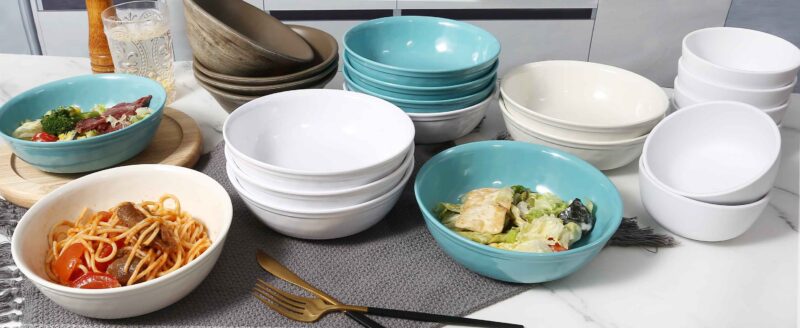
Contact Time with Food: Can Substances Penetrate Food?
The amount of time food is in contact with a surface can have a bearing on safety.
- Non-porous materials (melamine, plastic, stainless steel, properly glazed ceramics) will not allow substances to penetrate food, even with prolonged contact. Nevertheless, scratches or cracks on these materials will gradually provide a harbor for bacteria.
- Porous materials (unglazed ceramics, damaged surfaces) can absorb liquids and thus have chemicals or bacteria leak into food, particularly if they have been doing so for a long.
To decrease risks, check everyday dinnerware for cracks or surface damage, and if cracking or surface damage is found, use with care.
Extension: When you eat at some fast food restaurants, you may see a piece of paper between the tray and the food; when you go to a bakery to choose the bread you want, there is also a piece of paper between the tray and the food. Why can this piece of paper be used to place food?
Fast-food chains like KFC use food-grade paper that has been designed to safely hold food. Food-grade paper is manufactured under strict regulations, ensuring it is free from harmful chemicals or dyes. It is treated to resist grease and moisture, maintaining a barrier between food and any contaminants.
On the other hand, the newspaper uses inks that may contain dangerous chemicals, heavy metals, and dyes that can leach into food, particularly when heat or moisture is present. These substances have not been tested or certified for food safety, so newspapers are not an everyday choice for serving or packaging food.
Of course, there are many common food packaging options on the market, such as:
1. Glass packaging materials
It has the characteristics of transparency, sealing, chemical stability, and reusability. Suitable for wine, beverages, jams, meat, and other canned foods.
2. Plastic packaging materials
Plastic is a common category of food packaging. Common materials include polyethylene (PE), polypropylene (PP), etc., which are mainly high-barrier materials with gas barrier, moisture barrier, oil barrier, and other characteristics, as well as stable chemical properties.
Conclusion
It is important to learn about the surfaces of everyday dinnerware and their different uses to ensure food safety. Choose food-contact materials that are smooth and non-porous, and ensure tableware meets safety certifications like NSF. Observe the condition of your everyday dinnerware, and stay away from using materials such as newspapers that are not intended for food. Through intelligent choices, you can have a safe and healthy dining environment for yourself and your family.


